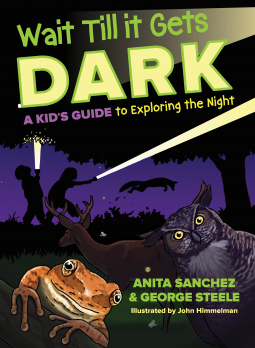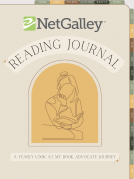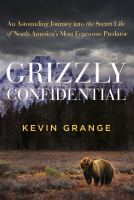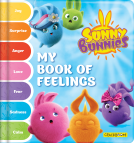
Wait Till It Gets Dark
by Anita Sanchez and George Steele - Illustrated by John Himmelman
This title was previously available on NetGalley and is now archived.
Send NetGalley books directly to your Kindle or Kindle app
1
To read on a Kindle or Kindle app, please add kindle@netgalley.com as an approved email address to receive files in your Amazon account. Click here for step-by-step instructions.
2
Also find your Kindle email address within your Amazon account, and enter it here.
Pub Date Oct 01 2017 | Archive Date Oct 13 2017
Rowman & Littlefield | Muddy Boots
Description
It’s night. It’s dark. It’s time to go indoors—or is it? The
outdoors at night can be a scary place, but this book will help young
readers investigate the mysterious nature of night.
To explore
the night, it would be great to have eyes like an owl, the sensitive
nose of a deer, and feet that can move as silently as a fox. Humans
aren’t quite as good as nocturnal animals at navigating the darkness,
but we can come surprisingly close. Our senses are much sharper than we
realize, if we learn how to use them. Some scientists are even
researching the sensory abilities of human hair!
Each chapter of
the book spotlights a different nocturnal creature. And while learning
about animals’ adaptations for navigating the world of night, young
readers discover their own surprising abilities.
Years of
teaching children in the outdoors has given the author, renowned
environmental educator Anita Sanchez, firsthand experience in
introducing students to the terrors and joys of nature at night. She has
led kids on night walks in a variety of habitats, including urban
settings. Based on these experiences, the book describes night-time
landscapes and the nocturnal animals that inhabit them, from desert
coyotes to the frog chorus in a backyard pond—and a corner of the
bathroom at midnight where a spider lurks.
Readers will encounter:
--The great horned owl, who can spot the twitch of a mouse’s tail in almost total darkness.
--The Gila monster, who prowls the desert night using its tongue to locate prey.
--The super-sensitive ears of a bullfrog (yes, frogs have ears!)
--The delicate sense of touch of a spider, capturing its prey by feeling the slightest vibrations of its web.
Sidebars called “You Can Do It!” offer fun and active ways for kids to
explore their own senses—learning more about their own eyes, ears, nose,
and senses of touch and taste.
--While using crayons at night, can your eyes tell red from green?
--Can you hold completely still for an entire minute, like a fox stalking its prey?
--Could you follow the scent trail of an onion across the back yard?
--Can you find sounds in the dark? Learn to use the “big ears” technique to locate sounds with accuracy.
George Steele is an environmental educator working with schools, nature centers and museums throughout the Northeast. The former director of the New York State Dept. of Environmental Conservation’s Education Camp Program, he received the Conservation Educator Award from the NYS Conservation Council, and the NYS Outdoor Education Association’s Gold Award for Lifetime Achievement. He has a degree in Forest Biology from the SUNY College of Environmental Science and Forestry.
Available Editions
| EDITION | Hardcover |
| ISBN | 9781630763183 |
| PRICE | $14.95 (USD) |
Links
Featured Reviews
 Reviewer 284049
Reviewer 284049
What a fun way to not only teach kids about nature in the dark, but also to get them over their fear of the dark. Filled with fun facts, activities, and scientific explanations for things like the headless horseman(!), it's a great book to give a young child. I don't know how much it would have helped my fears of being in the dark as a child, but I'm sure it would have been a nice resource to have.
Honestly, some of the activity suggestions were things that I, as an adult, decided to try out in the backyard.
 Kim C, Educator
Kim C, Educator
Wait Till it Gets Dark is a fun book that challenges the reader to open up the five senses and see the night in a different way. It is illustrated with colorful images of the animals, as well as diagrams that show the scientific principles behind the sense being described. It’s a great way to open up a whole new world to your kids.
Each chapter discusses one particular sense. Everything from eyes like an owl, to nose like a deer. Along the way, kids learn how these animals are particularly well adapted to life after the sun goes down. Easy and fun activities are included so kids can explore their own senses after dark and try to sense the world in the same way the wild animals do. There are activities that can be done as individuals as well as groups.
There are suggestions sprinkled throughout the text on how kids can help the species, such as watching for them crossing roads at night, and contributing to various citizen science projects. The appendix of the book has ideas about how kids can make their own contributions, including helping keep skies dark at night, listening for frogs for FrogWatch USA, helping measure firefly populations with an app, and documenting moth sightings.
For the bigger words in the text, there is a handy glossary at the end where kids can look up their meanings. The bibliography lists some excellent resources, should you want to go further and learn more about this fascinating subject.
The dark really isn’t that scary after all. Once you understand it, it becomes a fascinating time where animals conduct their lives. This book will help young readers learn to understand more about nature, and the dark that falls each night will no longer be so scary.
I thank NetGalley and the publisher for the advance reader copy I received in exchange for my honest review.
 J. Aislynn d, Reviewer
J. Aislynn d, Reviewer
Nighttime. Soft darkness envelopes all. This is the time of the owl, the bat, the fox. This is the time of crickets going crickee crickee. Frogs join the chorus- ribbit, ribbit. This isn't a time to fear, no, not at all. The authors introduce readers to a variety of nocturnal creatures from various habitats. Each beastie has a uniquely enhanced sense. There are exercises for readers to practice enhancing our own senses.
First up is Great Horned Owl with her big yellow eyes. Those eyes can detect the merest twitch of a mouse's tail, and her flight is silent as she strikes. Next comes the little Spring Peeper. This teensy frog has outstanding hearing! Deer come after. I had no clue they 'talked’ via scents. Gila Monster teaches us how to use taste to explore the environment. Spider teaches the finer points of touch, while Fox puts proprioception and kinesthetics on show. There's a chapter devoted to how some animals are basically living compasses, with innate knowing of magnetic north. At the end is a resource section, and a glossary.
I learned quite a bit from this book! I had no idea owls had more rods than cones in their eyes, giving them a greater ability to process things in black, white, grey, and to detect those miniscule movements in the grass. Or that deer communicated via various scents they create. Spiders can pick up the faintest vibrations, and tell a difference between food and foe.
My cubs and I enjoyed trying the exercises, with varying results. With my one eye, it didn't take much to get the disappearing head trick going. Funny that it might but have been the cause of seeing 'headless’ horsemen. Trying the scent and taste experiments were fun. The touch one were too much for me, trying to surpass what is natural for me. Losing my sight, and becoming legally, if not completely, blind heightened my sense of touch.
This is a perfect book for those who are nature-lovers!
***Many thanks to Netgalley and Rowman & Littlefield for providing an egalley in exchange for a fair and honest review.









